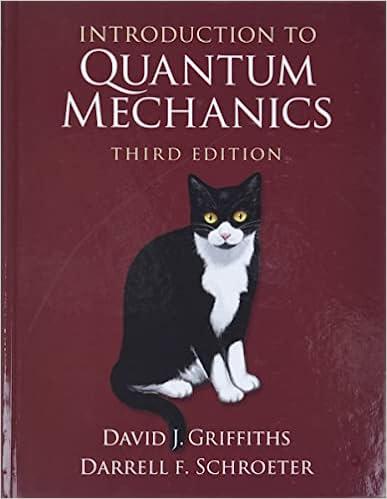In Yukawas original theory (1934), which remains a useful approximation in nuclear physics, the strong force between
Question:
In Yukawa’s original theory (1934), which remains a useful approximation in nuclear physics, the “strong” force between protons and neutrons is mediated by the exchange of π-mesons. The potential energy is

where r is the distance between the nucleons, and the range r0 is related to the mass of the meson: r0 = ћ/mπc. Question: Does this theory account for the existence of the deuteron (a bound state of the proton and the neutron)?
The Schrödinger equation for the proton/neutron system is (see Problem 5.1)

where μ is the reduced mass (the proton and neutron have almost identical masses, so call them both m), and r is the position of the neutron (say) relative to the proton: r = rn - rp. Your task is to show that there exists a solution with negative energy (a bound state), using a variational trial wave function of the form
![]()
(a) Determine A, by normalizing Ψβ (r).
(b) Find the expectation value of the Hamiltonian

in the state Ψβ.

(c) Optimize your trial wave function, by setting dE(β)/dβ = 0. This tells you β as a function of γ (and hence—everything else being constant—of V0), but let’s use it instead to eliminate γ in favor of β:

(d) Setting ћ2/2μr20 = 1, plot Emin as a function of β, for 0 ≤ β ≤ 1. What does this tell you about the binding of the deuteron? What is the minimum value of V0 for which you can be confident there is a bound state (look up the necessary masses)? The experimental value is 52 MeV.
Step by Step Answer:

Introduction To Quantum Mechanics
ISBN: 9781107189638
3rd Edition
Authors: David J. Griffiths, Darrell F. Schroeter





